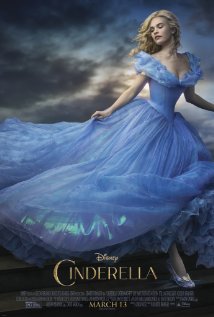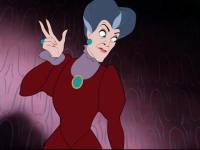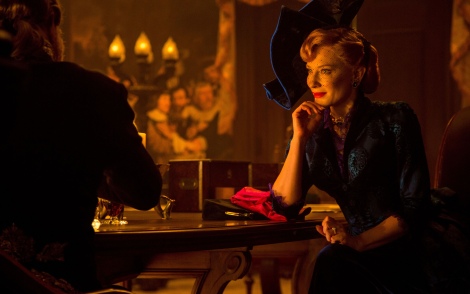 Over the past couple of years, there has been an influx in retelling of old fairy tales – Jack the Giant Slayer, Hansel and Gretel: Witch Hunters, Maleficent, and now Cinderella. I’m sure this retelling has happened for ages, but recently it’s as if it has become the “cool thing to do”, and Disney is not impervious to jumping on the bandwagon.
Over the past couple of years, there has been an influx in retelling of old fairy tales – Jack the Giant Slayer, Hansel and Gretel: Witch Hunters, Maleficent, and now Cinderella. I’m sure this retelling has happened for ages, but recently it’s as if it has become the “cool thing to do”, and Disney is not impervious to jumping on the bandwagon.
Kenneth Branagh’s recent production of Cinderella (starring Lily James, Helena Bonham Carter, Cate Blanchett, and Richard Madden) does not follow in the footsteps of sweet Cindy’s predecessor Maleficent, where Angelina Jolie gives us a tragic look into the supposed villain’s origins. Branagh is perhaps a bit too wise for such a dramatic change. Now hear me out! It isn’t that I do not love the retelling of a classic story in which all we know is turned topsy-turvy, making the villain the hero and (sometimes) vice versa. I loved Wicked, and I loved the changes to the story of Maleficent and her connection to Aurora (aka: Sleeping Beauty). However, if you changed Cinderella, the pinnacle of princesses, and made Lady Tremaine and her daughters sympathetic characters, the movie would most likely end up being more of a farce or satire of the original than anything else.
Though Branagh sticks close to the story we are given in Disney’s 1950 animated classic, he gives us the chance to get to know the other characters as well. For instance, I enjoyed getting to actually see the parental relationships. First we see Cinderella’s mother and father. From the time we spend with them, we see where Cinderella gets not only her looks, but her kindness in the face of such wickedness. We also get to see more of the Prince and his father, the King, as they struggle to learn the balance between family and duty. And who could forget stepparents? In this version, Lady Tremaine sheds light on a little of her history and why she is so evil. Though her story is one of love and loss, I still do not find it in my heart to feel sorry for this wicked stepmother.
Perhaps one of the biggest changes Branagh makes is having Cinderella and the Prince meet before the ball in a scene vaguely reminiscent of Andy Tennent’s Ever After (you know, that Cinderella film starring Drew Barrymore). The two have a battle of wits, if you could call it that, and the Prince falls for Cinderella’s kindness and determination. Thus when we see the two at the ball, it makes more sense that they only have eyes for each other, making this fairy tale less of your creepy “love at first sight” and now I must hunt this woman down, rescue her, and make her my wife storyline.
I also must praise the cinematography and design of this film! Some shots were absolutely wonderful, from Cinderella’s hasty ball exit to an old-fashioned, eyes highlighted close-up of Cinderella as the clock reminds her of the coming close to her night out. (Unfortunately, I cannot find a still of this.) The use of mirrors in this movie should also be noted as it often comes when a character is reflecting or revealing a part of their true self. And of course, color plays a major role in this film. Cinderella is always in blue, except when in her mother’s pink dress, which eventually becomes blue. (On a related note, I found the scene in which her mother’s dress is torn by her stepsisters quite tame in this film compared to its heartbreaking and enraging animated counterpart.) The stepsisters have their own signature colors – pink and yellow. And Lady Tremaine, in true Disney villain fashion, is decked in green in all but one scene. This, to me, was the most obvious and intentional action of the entire film. I guess this makes sense since Cate Blanchett is arguably the biggest star in the film.
Unfortunately, the green theme is lost in one scene – a scene in which we see Lady Tremaine’s evil fully come to light. Yet, here they dress her not in green but blue, and in a fashion that seems to be a modern nod to the animated Lady Tremaine.
Though it’s hard to see in the pictures, note the purple undershirts, ruffled sleeves, and earrings and matching brooch (which is a necklace for Blanchett). Though I appreciate the reference if it even is a nod back in time, I do not understand the break from the green theme. Perhaps she is trying to hide her evil intentions from the other character in this scene (whom shall remain nameless for fear of spoilers).
For me, the shining moment of this film’s cinematography comes near the end, when Cinderella is found and escorted by the Prince’s guard to try on the shoe. Cinderella, who was locked away in the attic by her wicked stepmother, is set free and heads to see the Prince. She closes the door behind her, closing her stepmother in the room Cinderella had previously been locked away in, sealing Lady Tremaine’s fate as a villain.
Though I still prefer the classic animated 1950 version of Disney’s Cinderella, I thoroughly enjoyed Branagh’s live-action film. The actors did a wonderful job bring these characters to life, and the cinematography is reminiscent of a classic era of film long past. Despite that fact that Cinderella is a classic fairy tale, there are changes leading up to the happily ever after that should leave modern audiences a bit happier and far less creeped out.
**Update: Thanks to Georgina at The Aspiring Film Critic, I realized that Kenneth Branagh is Gilderoy Lockhart in the Harry Potter films, not that this changes my thoughts on Cinderella, but I could have at least tried to throw in some witty Potter reference! Oh, the missed puns and opportunities.


Haha! No worries! Still a great review though. 🙂
LikeLike
Thank you so much! I have been inspired by your Top Ten lists (and many a conversation with a new friend of mine) and most likely will be working on a Top Ten list for my favorite movies soon. Making one for books would probably be far too difficult, but movies MIGHT be a bit more manageable.
LikeLiked by 1 person
I’ll probably go and see this on Easter- I can’t wait 🙂
LikeLike
That will be fun! Let me know what you think of it. 🙂
LikeLiked by 1 person